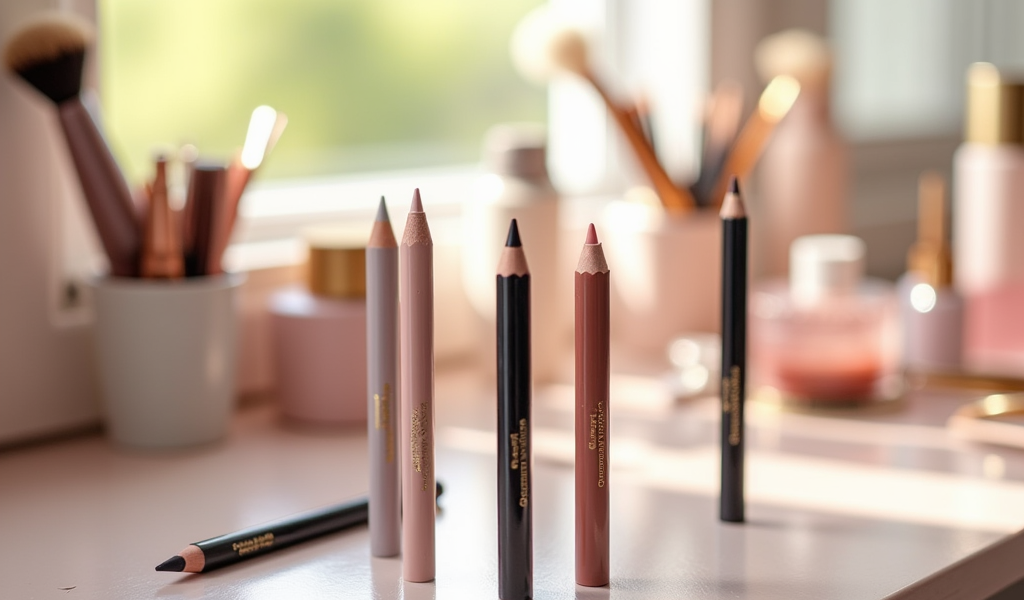Understanding the different types of eyeliner can transform your makeup routine, enhancing your eyes and creating a myriad of looks, from natural to dramatic. The three main types of eyeliner are pencil, liquid, and gel. Each type offers distinct advantages and techniques for application, making them essential tools in any makeup enthusiast’s arsenal. In this article, you’ll discover the unique features of each type, tips on how to apply them effectively, and the best settings for their use.
Pencil Eyeliner

Pencil eyeliner is one of the most versatile options available, making it an excellent choice for both beginners and experienced makeup users. It typically comes in two forms: traditional wooden pencils and retractable twist-up versions. Pencil eyeliners are easy to control, allowing for precise application, whether you’re creating a subtle line or a bold wing. Moreover, they are ideal for adding an everyday touch to your makeup routine. They come in a variety of finishes, including matte, glossy, and shimmery, allowing you to customize your look. Here are some practical tips to ensure you make the most out of your pencil eyeliner:
- Sharpen the pencil: A sharpened tip ensures precision for clean lines.
- Apply with a steady hand: Use short strokes for a more controlled application.
- Blend quickly: If desired, smudge it out before it sets for a smoky effect.
- Set with eyeshadow: For longevity, dust a matching eyeshadow on top.
Liquid Eyeliner

Liquid eyeliner is known for its intensity and long-lasting hold, making it a popular choice for those seeking bold looks. It usually comes in a small bottle or tube with a brush or felt-tip applicator, allowing for ultra-fine lines and precision. The formula generally dries quickly and can result in a striking, matte finish. Achieving the perfect liquid liner look requires some practice, but once mastered, it can elevate your makeup game significantly. To apply liquid eyeliner effectively, consider the following steps:
- Choose the right applicator: A brush gives a different finish than a felt-tip pen, so choose according to your skill level.
- Start with a steady hand: Rest your hand on your face to create stability while applying.
- Begin in the middle: Apply from the center of your lash line, moving outward for better control.
- Connect both sides: Draw the inner corner last to ensure symmetry.
- Let it dry: Allow it to set before reopening your eyes to avoid smudges.
Gel Eyeliner
Gel eyeliner offers a unique hybrid experience, combining the ease of pencil with the intensity of liquid. It comes in a pot or jar and requires a brush for application. The formulation is usually creamier than its liquid counterpart, allowing it to glide on smoothly while still offering the staying power you’d expect from liquid formulas. Gel eyeliner is less prone to smudging and works well for creating both precise lines and softer, blended looks. To get the best results from your gel eyeliner, keep these tips in mind:
- Use a brush: A sharp, angled brush helps achieve the most defined lines.
- Warm it up: If it feels stiff, swirl your brush in the pot to soften the gel before application.
- Create layers: Start with a light layer and build up to the desired intensity.
- Set with powder: If desired, layer with a similar eyeshadow for added staying power.
When selecting the right type of eyeliner for your look, consider both the occasion and your personal comfort level with application. For daily wear, a soft pencil may be ideal due to its quick application and blendability. Liquid eyeliner works best for evening events or special occasions when you want your eyes to pop. Gel liners are perfect for those who desire versatility and long-lasting performance, allowing for various styles ranging from subtle to sultry. Additionally, consider the finish you prefer; matte liners for a sophisticated feel or glossy liners for added drama. Ultimately, the beauty of makeup is experimentation, so don’t hesitate to try out all three types to find which suits your needs best.
Conclusion
Understanding the distinct features and applications of pencil, liquid, and gel eyeliners can make a significant difference in how you express your unique style. Each type offers its own set of advantages and techniques, making them essential parts of any makeup routine. By mastering the application techniques of each eyeliner type, you’ll be equipped to create eye-catching looks for any occasion, enhancing your overall makeup artistry. Explore and express; the right eyeliner can transform your appearance and confidence.
Frequently Asked Questions
1. Can I use regular pencil eyeliner on my waterline?
Yes, but it is recommended to use specially formulated waterline pencil eyeliners that are safe for that area, as they generally have a softer texture and are less likely to irritate the eyes.
2. How do I remove liquid eyeliner effectively?
To remove liquid eyeliner, use a makeup remover that’s suitable for waterproof products, apply it on a cotton pad, and gently press against your eyelid for a few seconds before wiping it away.
3. Is gel eyeliner suitable for beginners?
Yes, gel eyeliner can be beginner-friendly, especially if you feel comfortable using a brush, and it allows for versatile application styles.
4. Can I mix different types of eyeliners?
Absolutely! Mixing different eyeliner types can create unique looks. For instance, you can use pencil for a base and layer liquid or gel on top for added intensity and definition.
5. How long does each type of eyeliner typically last?
The longevity of each eyeliner varies; pencil eyeliners may last 4–6 hours, while liquid eyeliners often hold for up to 12 hours, and gel liners can last around 8–10 hours, depending on the formula and environmental factors.









